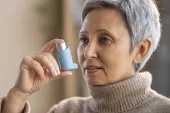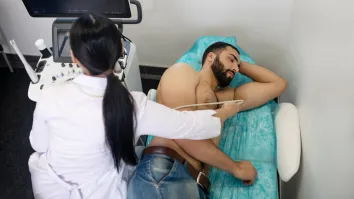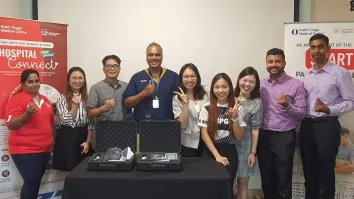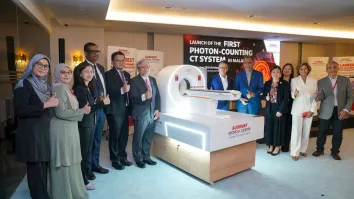Cell therapy in the Asia Pacific — solution to the cancer challenge?
Over the next decade, an estimated $2t investment into Universal Health Coverage (UHC) schemes is expected to land in Asia. The developing markets in the region have traditionally under-funded healthcare at a rate of about 5% of GDP (compared to the average of 12% in OECD countries like Australia and Japan). Whilst some emerging markets in Asia continue to grapple with lingering infection control, all are shifting focus to the more advanced lifestyle diseases.
Cancer is clearly a top priority. It’s the second-highest cause of death globally, about 70% of which come from low- and middle-income countries. And cancer is not standalone; infections such as Hepatitis and HPV are responsible for up to 25% of the cancer cases. Cancer drugs represent one-third of the top 15 best-sellers, with a forecasted 10.9% CAGR leading up to 2030. The age of one-size-fits-all blockbusters is fading though and, with average efficacy of current treatments running at about 25%, the future will require personalised approaches for niche populations.
As more innovative and curative therapies for cancer become available, questions arise about the access and affordability in a UHC-driven geography like Asia. Traditional Health Technology Assessments (HTAs) may not be quite fit-for-purpose. Chimeric Antigen Receptor T, or CAR-T, is one such example. Advances in genetic engineering combined with an improved understanding of “T” cells have led to the design of synthetic tumor targeting receptors which, when introduced into the human body, begin to act as a form of immunotherapy. This is currently considered a last-line treatment option for physicians, but the results of CAR-T are impressive and give new hope to patients and their families. Efficacy evidence is still being gathered with more clinical trials underway, so it is for this reason that some of the product launches to date have been under outcomes-based pricing arrangements.
Australia creates the pathways for CAR-T
In 2017, KPMG in Australia was challenged by a Life Sciences MNC to determine the appropriate funding pathway for Federal Government reimbursement of a CAR-T innovation. As an inter-dependent, stepwise process that involved medical and manufacturing procedures (patient and nonpatient facing), the CAR-T was not a standalone item. Whilst funding pathways exist in Australia for Leukapheresis and T-Cell infusion stages of treatment, there was little precedent for the government to pay a sponsor company for the manufacture of patients’ extracted T-cells.
Australia is a global leader in conducting robust HTAs of medicines and vaccines. Both the Life Sciences MNC and KPMG accepted that the government would wish for CAR-T to be subjected to the same rigor. Importantly, as a Class 4 Biological, the CAR-T innovation was not eligible for consideration by the Pharmaceutical Benefits Advisory Committee (PBAC). Therefore the Medical Services Advisory Committee (MSAC) appeared to be the obvious choice for HTA; however, the MSAC had little experience in evaluating targeted therapies such as CAR-T and, for the Life Sciences MNC, minimal exposure in navigating the pathway through the committee. In addition to HTA, the greater challenge was how the funding would be enabled in the complex UHC system of Australia.
Some progress has been made, with funding achieved in 2019 for patients with paediatric Acute Lymphoblastic Leukaemia (pALL). Other indications are currently with MSAC for consideration. The funding was made possible via a series of agreements between the Australian government and the states and territories. The Federal Government also announced an A$80m investment into the manufacture of CAR-T at the Peter MacCallum Cancer Centre, ensuring that all stages of the CAR-T pathway are able to remain in Australia. Critically, the reimbursement pathway enabling patient access has been successfully navigated in Australia for CAR-T and ultimately opened the channel for funding of other cell therapies.
China’s localisation play
China is now the second largest country in the world for CAR-T clinical trials, as much as 80% of which are conducted by the hospitals themselves. The CAR-T industry chain is in process of being formed in China, including ongoing and expected regulatory reforms to benefit access to such novel therapies. Concurrently, cancer drugs have seen as high as a 50% voluntary price reduction due to competition to remain on the national approved listing.
KPMG has been involved with the early multi-stakeholder dialogue as the country prepares for initial CAR-T launches, keen to look beyond traditional chemotherapy or stem-cell transplantation options. These stakeholders includes local CAR-T innovators, joint ventures of the same with the foreign MNCs, and the myriad of hospitals and patient communities across the provinces who are becoming increasingly knowledgeable and opinionated.
Some of the key findings from our experience thus far include:
- Physicians and patients view CAR-T as more personalised and precise than other treatments, and the clinical data provides strong support for the efficacy
- The manufacturing and logistics of CAR-T is complicated – short shelf life and cold chain requirements, combined with limited experience in handling cell therapies containing toxicity; there remains a lack of appropriate standards and accreditation
- The cost composition of CAR-T is unique and therefore difficult to price (and prove) in a new market – some sort of value-based contracting model will likely continue to be the strategy, which means alignment across multiple stakeholders, channels, and decision-makers is critical
- Regulators are supporting the research of novel therapies, including in the oncology space with accelerated approvals and updated policies; whilst signs are positive that CAR-T will land on the national preferred products list, this remains a fluid development thereby leaving multiple access pathways
Japan’s data-driven CAR-T journey
The first CAR-T products are expected to become available to patients in Japan in August 2019. Given that by this point CAR-T will be reasonably tested in similar mature healthcare markets, Japan is taking the opportunity to proactively structure the public-private databases so as to link the therapy information, clinical guidelines, outcomes measures and patient profiles. This is expected to serve both regulatory as well as business endeavors.
In the US, a research institution that powers advanced hematopoietic cellular therapies for the scientific community, having a large network of transplant centers and clinical information on 475,000 transplant recipients, collects outcome data on every allogeneic transplantation performed in the country. Japan is seeking to re-create their version of the same database.
KPMG is supporting the oversight of this project, ensuring the database complies with local regulations and also liaising with a multi-stakeholder consortium so as to align on data requirements that meet the needs of the public as well as private sectors. The database is scheduled to have the first patient data inputted by October 2019, and to be able to share the data with the stakeholders by March 2020. It will be the first database to store cellular therapy data in Japan that can be shared across members of the industry.
Concurrently, a data center in Japan is conducting a nationwide collection of recipient, donor, and outcomes information. It is therefore expected that this data center in Japan will be one of the main data providers for the new overarching cellular therapy database
CAR-T is only the beginning. The database will, in due course, expand into other cellular therapies in order to share data and to continue to advance research and development in this area.
Key near-term strategies
CAR-T is by no means a perfect solution – toxicity can be severe and evolve rapidly. Adverse effects include immune activation as well as other neurological events such as confusion, delirium, and even seizures. It is a journey, and likely new combination therapy options to help these issues will become available too. But it is safe to say that genetic, personalised, curative therapies are here to stay especially for population disease crises like cancer. It is a matter of continued multi-stakeholder dialogue to drive alignment on access and affordability.
Three key strategy levers for the near term:
- Consider Asia for the first launch as it is by far the largest cancer population and the CAR-T discussions have already started.
- For the manufacturers, seek to truly understand the payer’s perspective; the discussions can be difficult when it comes to pricing, but the reality is that population health requires shared incentive models.
- Don’t go alone – look for partnerships, including local manufacturing/distribution, academia, diagnostics, even tech players and others that directly influence population behaviors.



















 Advertise
Advertise





